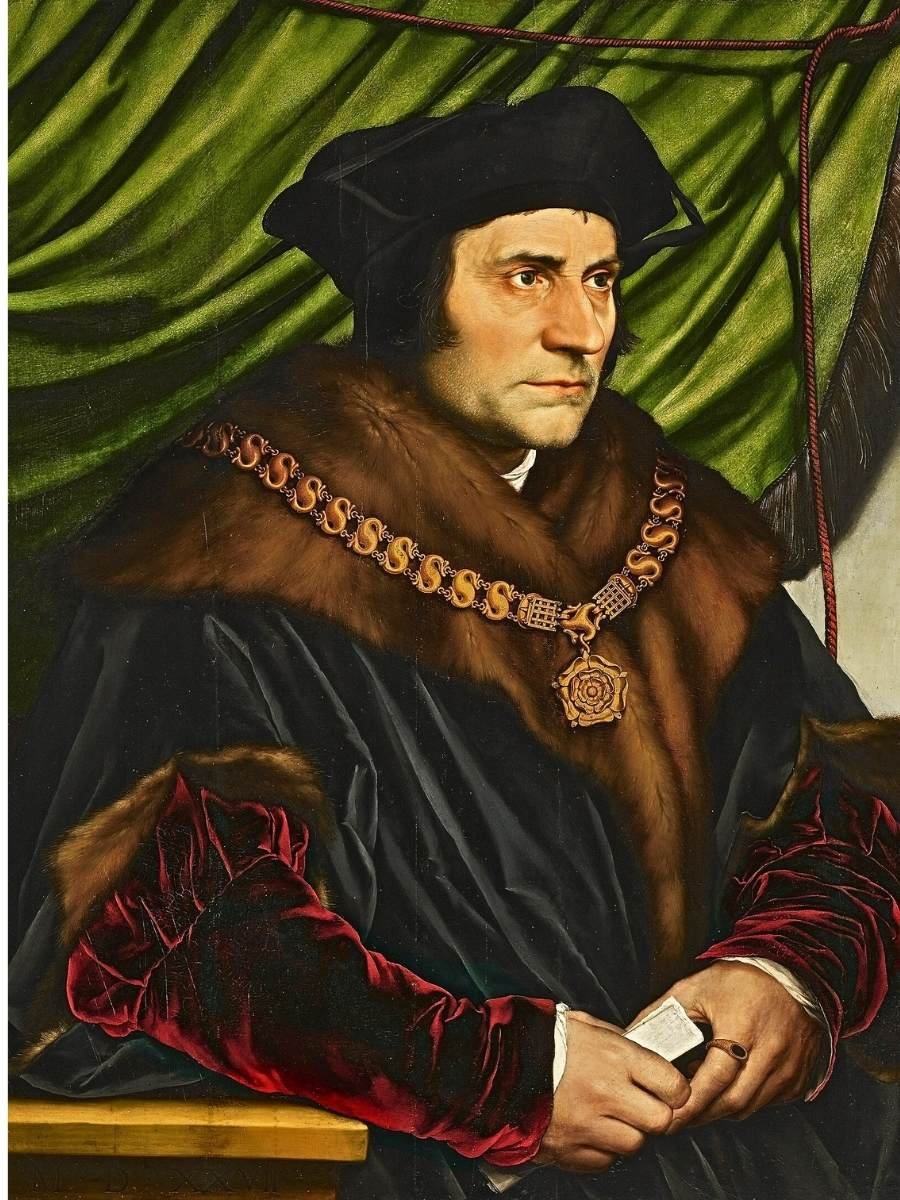New York, Frick Collection
In 1524 Holbein painted a portrait of the great humanist scholar Desiderius Erasmus, now in the Louvre. Both painter and subject were then living in the Swiss city of Basel, one of the intellectual powerhouses of Europe. But soon afterwards both Holbein and Erasmus (an accomplished fence sitter during the testing early years of the Reformation), had decided to quit the town which had been beset by Protestant agitation and iconoclastic riots. So late in 1526 Holbein, leaving his wife and small children, headed for Antwerp and then on to London where, armed with a letter of introduction from Erasmus, he joined the household of Sir Thomas More in 1527.
More, a close friend of Erasmus, was a successful lawyer and politician, he was elected to parliament in 1504 and by 1517 had become a royal councilor to Henry VIII. His humanist political work Utopia had been published in 1516 which took the form of discussions on the best form of government. In 1521 he had received a knighthood; two years later he became Speaker of the Commons and in 1525 he was appointed Chancellor of the Duchy of Lancaster.
So by 1527, when this magnificent portrait was painted, More was a statesman of some importance (soon to rise even further in the king’s favor). And it is as a statesman rather than a scholar that Holbein has portrayed him, expensively robed with his chain of office arranged over his ample fur collar. More sits in three-quarter profile, his head framed against a green curtain, his expression intense and determined – one might almost say severe. He was canonized in 1935 and subsequent biographical writings have perhaps colored our perception of him as a ‘man for all seasons,’ a saintly figure caught in the monstrous machinations of a tyrannical king; but here we are in the company of another Thomas More, an implacable royal advisor who had pressed that same king for more draconian measures in pursuance of the persecution of heretics.
Holbein’s amazing ability to render in paint the precise tactile quality of such materials as fur, velvet and silk is demonstrated to the full in this picture – he pulls out all the stops. One can feel the weight of the heavy garment on More’s shoulders and the pressure of his golden chain as it settles into the fur. We can see how the fur parts (in the way that only fur does) as the pelt is turned in around his neck and we can only marvel at the miraculous way he has conjured that luminous quality of the velvet used for More’s cuffs. All this is accentuated by Holbein’s subtle use of light and shadows to produce an uncanny sense of volume and presence – the feeling that the reality of Thomas More is palpable, right down to the stubble on his chin.
More’s steady ascent continued after this portrait was completed when, in 1529, he succeeded Cardinal Wolsey as Lord Chancellor. But three years later he resigned when he found himself unable to concur with the king on the matter of his divorce from Catherine of Aragon. In 1534 More refused to swear an oath accepting the legitimacy of an altered succession in favor of Anne Boleyn’s children and also repudiating the supremacy of the pope. He was committed to the Tower of London in April 1534 and executed in July 1535.
Contemporary Works
1527 Jan Gossaert: Danaë, Munich, Alte Pinakothek
c1527/8 Parmigianino: The Conversion of St Paul, Vienna, Kunsthistorisches Museum
1528 Pontormo: Deposition, Florence, S Felicita
Categories:
- Northern Renaissance
- Portraiture
- Sixteenth Century England

